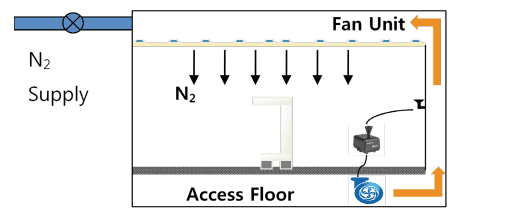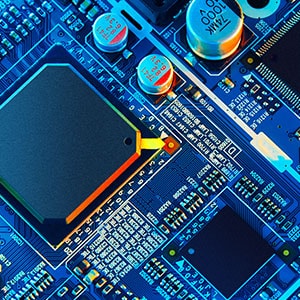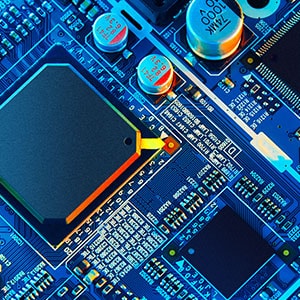OLED N2 Box Particle Monitoring Solutions: Introduction
As with all clean manufacturing industries, flat panel manufacturing particle count is important to understand to keep contamination levels low and product quality high.
Most display manufacturers are investing in Organic Light Emitting Diode (OLED) technology which offers improvements in color fidelity, contrast and power consumption over legacy TFT-LCD platforms. Compared with TFT-LCD, the OLED process is more sensitive to micro contamination, including particles, electrostatic discharge (ESD), airborne molecular contamination (AMC), volatile organic compounds (VOC), and even H2O molecules. To protect against these micro contaminants, many OLED processes and panel handling are performed in pure N2 environments.
While most flat panel display production is done in a cleanroom environment to minimize particulates, AMC and VOCs, the OLED manufacturing process requires an additional level of contamination control. OLED yield is also sensitive to O2 and H2O contamination. Even ppb levels of O2 in the production environment can kill an OLED device. To avoid these contaminants, much of the OLED production is done in an isolated and nitrogen (N2) filled production environment. Adding particle counting capability in these N2 environments is critical to maintain high production yields but raises additional challenges compared to typical cleanroom monitoring. The particle counting system cannot add O2 or H2O contamination to the N2 environment and must limit the amount of N2 pumped out of the N2 environment in an effort to minimize cost.

While there are challenges presented by N2 box monitoring, there are techniques to successfully monitor micro contamination in them. These techniques are useful to optimize tool setup and continuous process monitoring during production. Coupling these techniques with an effective micro contamination monitoring package and protocol is critical for minimizing contamination-related yield impacts and issues with long-term product reliability.
The OLED display production process is vulnerable to particle contamination, but also to low levels of O2 and H2O contamination. This adds a level of complexity to monitoring particle contamination in these production environments while not adding additional O2 contamination into the system. Particle Measuring Systems has investigated these challenges and successfully implemented proven monitoring solutions for N2 environments in modern OLED flat panel display facilities.
In our next blog, we will discuss proven solutions for common difficulties in box particle monitoring practices. Download the full application note here.


